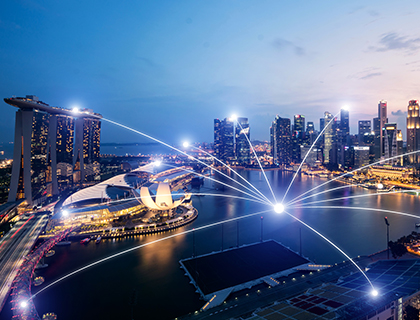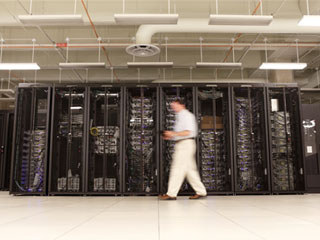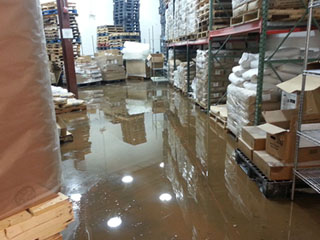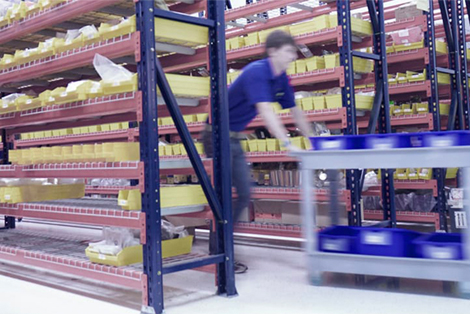Introduction
In Singapore, Excessive energy consumption of data centers and the challenges of going green in a tropical country led to issuing of a ban for new data centers. Data centers already consume some 7% of the country’s total electricity consumption.
However, as cloud companies, telecommunications, and multinational organizations expand to the Southeast and the rest of Asia, demand for data centers is increasing. In the next decade, as the region’s digital infrastructure industry grows at a “relentless pace,” Asia is expected to become the world’s largest data center region in terms of capacity over the next decade.
The Ban For New Data Centers
As the whole world is rushing through sustainability efforts, Singapore is also making its moves in this matter. As a city country in a tropical region, protecting itself from the harmful effects of climate change such as floods and rising sea levels is an important task. This is due to the fact that even with having just 0.0005% of the world’s surface area it contributes 0.11% of the worldwide carbon emissions. Singapore issued a ban for new data centers in 2019 as an effort to reduce its carbon emissions.
Except for the joint venture between Singapore Press Holdings (SPH) and Keppel Corporation to create and operate a new data center within the former’s Genting Lane premises, no new data center projects appear to have been approved since then
Officials previously kept silent about it, but in response to a query from local newspaper The Business Times in November, the Economic Development Board (EDB), Infocomm Media Development Authority (IMDA), and JTC Corporation (JTC) recently issued a terse joint statement, which publicly acknowledged an implicit moratorium for the first time.
Lifting The Ban For New Data Centers
A statement released on January 11, 2022, is indicating that the government of Singapore will finally lift the ban for new data centers. However, the government also indicates that it would not go easy on these facilities. Data centers to be built within their boundaries have to pass energy efficiency standards.
After completing the industry review of the data center sector, the government of Singapore decided to lay stricter environmental guidelines for new digital infrastructure to be built in their city. As per the statement, the country encourages data center investments, however, only the data centers among the best in regards to energy efficiency, are welcome.
The Terms For New Data Centers
Limiting Capacity
Singapore’s government has opened up, lifting the ban for new data centers, but with constraints, including limiting the power capacity for new facilities to roughly 5 megawatts. The moratorium was a good thing to slow down the rate of expansion and reflect on the issues about sustainability and the challenges faced by the electrical grid network.
The capacity ceiling may be sufficient for retail operators, but it will be a hindrance for facilities catering to hyperscalers like Amazon, Microsoft, and Apple, which typically demand 8-24 megawatts of electricity.
MTI said it is reaching out to industry players for feedback and further input on the amended policy, which has yet to publish comprehensive instructions. He explained that the industry’s work in 2019 was critical in helping the government devise a system that will allow the sector to grow in a sustainable manner while also ensuring that Singapore meets its climate change mitigation targets in the coming years.
As of last year, there were 70 data centers in Southeast Asia’s wealthiest country, with a total power capacity of 1,000 megawatts. According to government data, these server hosting facilities were responsible for roughly 7% of the country’s overall power usage in 2020, up from 5.3% a year earlier.
Flexible Choices For The Data Centers
New policies should emphasize ensuring that operators can make their facilities “genuinely green and sustainable.” He mentioned that Singapore’s Keppel Corp is currently looking into the possibility of building a floating data center park that would be cooled directly by the sea while conserving the island’s limited land resources.
If the government decides to impose a quota on the amount of energy used by individual facilities, he believes it will force operators to buy numerous projects to meet their capacity needs, which will further exacerbate the country’s difficulties, given the country’s limited availability of sites.
Green certifications and incentive schemes promoting data center sustainability, such as the Ministry of National Development’s Green Mark for Data Centers program, as well as the Resource Efficiency Grant for Energy and the Investment Allowance for Emissions Reduction schemes, which reward companies for achieving energy efficiency, have already been established in Singapore.
In terms of size, connectivity, power costs, and other metrics, Cushman & Wakefield’s 2022 Data Centre Global Market Comparison research published this week ranks Singapore as the top data center market in APAC and second internationally after northern Virginia. Despite the embargo, Singapore outperformed its regional rivals Hong Kong and Sydney, according to the report.
Harnessing Renewable Energy Sources
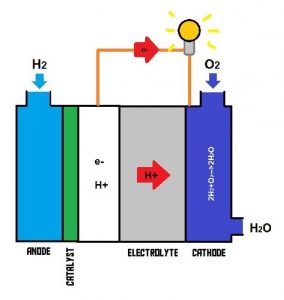
Photo Credit: www.youtube.com/AKIO TV
Getting as much renewable energy as feasible would be one of the plan’s aims. For starters, by 2030, Singapore intends to boost its solar capacity by more than seven times, bringing it up to a peak of 2 gigawatts (GWp). As a result, it is focusing on maximizing the placement of solar panels on the available surfaces, such as buildings’ vertical surfaces, reservoirs’ vertical surfaces, and even seabeds.
The Public Utilities Board, the country’s water regulator, has already inked a 25-year power purchase agreement (PPA) for a 60MW floating solar project planned for Tengeh Reservoir. Facebook, on the other hand, has inked a 100MW power purchase agreement with a company that is currently constructing a $1 billion 150MW data center that will open in 2022.
- Hydrogen Fuel Cells
However, simply installing solar panels on the entire island and its surrounding waters will not be enough to lessen Singapore’s carbon impact. But what if it has the ability to import electricity from renewable sources from other countries?
On this front, the Energy Market Authority (EMA) of Singapore says it wants to publish a Request for Proposal (RFP) to import 100MW of power from Malaysia by March next year. It is envisaged that the two-year trial phase will allow Singapore to learn more about the market and identify technological issues.
Separately, a bold commercial venture intends to provide renewable energy from Australia to a massive 10-gigawatt solar farm that will be developed in the country. While there are significant hurdles to overcome, not least the expense and dependability of a 4,500-kilometer undersea transmission network, it’s hard to imagine Singapore not taking it seriously.
Finally, Singapore is attempting to improve its knowledge on how to use hydrogen as a data center fuel source. Last year, Keppel Data Centres Holding and Mitsubishi Heavy Industries Asia Pacific signed a Memorandum of Understanding to collaborate on the development of a hydrogen-powered data center concept in Singapore.
Despite the fact that hydrogen is a clean-burning energy source, how it is produced has an impact on the environment. The technology and infrastructure to harness hydrogen in data centers, on the other hand, might be developed, allowing hydrogen to be shipped in as fuel from other nations where it can be produced from renewable energy sources
Energy-Efficient Data Centers
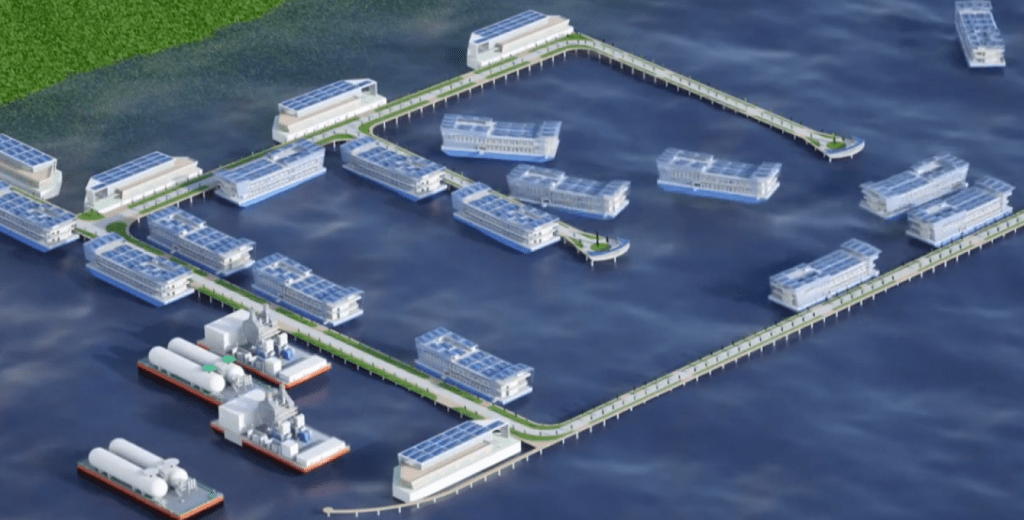
Photo Credit: www.datacenterknowledge.com
Another aspect of the approach is to improve the efficiency of data centers. There has been a lot of work done on how to get low PUE in data centers, but it’s mostly about taking advantage of the inherent advantages of cooler climes, with less attention paid to the issues of tropical regions.
In 2016 the Infocomm Development Authority of Singapore (IDA) announced an experiment on a tropical data center to get around it. The goal was to persuade CIOs and data center managers that increasing humidity levels in tropical climates do not affect performance or dependability. Despite the fact that the trial was delayed at first, it appears that it was completed satisfactorily, according to multiple reports.
In 2017, different research looked into the feasibility of establishing a data center that was more than 20 floors tall. The primary purpose is to conserve land, but a secondary goal is to see if a high-rise data center’s novel architecture and internal design components may be used to cut energy consumption or improve efficiency. It’s unclear what happened after that.
Floating data centers are also being investigated by the country. Seawater cooling may be a tempting alternative for a floating data center park, despite being advertised as a way to reduce land use.
Aside from seawater, another approach to cool data centers is to use the cold energy released by the liquified natural gas (LNG) re-gasification process to chill them. Singapore uses LNG to provide a large portion of its energy needs, and this cold energy is currently disposed of in the ocean. National University of Singapore (NUS), Keppel Data Centres, and Singapore LNG Corporation are evaluating an appropriate thermal energy carrier to harness this energy (SLNG).
Making It All Work Together

Photo Credit: i.pinimg.com
The use of multiple renewable energy sources like hydrogen, solar energy, cold energy, is no doubt the best decision to do for data centers. However, putting them all together in the production of a data center is a very different ball game. SP Group, Singapore’s CapitaLand, and Sembcorp inked an agreement to research the usage of integrated energy for data centers, with the first pilot site being CapitaLand’s freshly remodeled data center.
The lessons learned are likely to be applied to the knowledge base in order to produce green data centers that can make use of the many technologies that are being developed and then condensed into standards for future facilities that are more environmentally friendly.
With a multi-pronged effort to harness renewables and increase data center energy efficiency, it is evident that Singapore is playing the long game. It can consolidate its position as Asia’s data center hub – and with sustainability in mind – with time, the necessary technological advancements, and the right standards. As an added plus, many of the skills may be transferred to other countries with similar problems, thereby paying for themselves.
Time, on the other hand, isn’t on its side. Because of an unexpected and long-running pandemic that has sharply increased global digital demand, innovation takes time, and the clock is ticking. The cost per kilowatt (kW) has been steadily rising in Singapore as colocation providers have tried to mitigate the impact of reducing colocation vacancies. The waiting list for new data centers is growing, and some proposals to create additional data centers in adjacent countries have been reworked.
The Rise Of New Datacenters with AKCP Monitoring
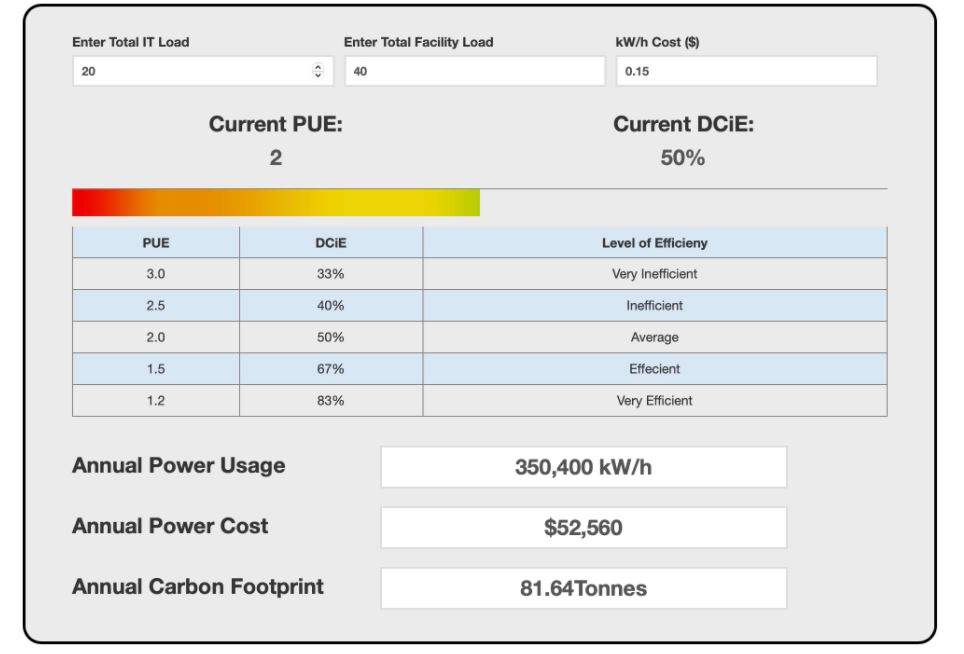
Power Usage effectiveness
Power Monitoring Systems
Power Monitoring systems are available from many of the well-known data center providers such as AKCP. The AKCP power monitoring system has several advantages over many other systems. They provide a device that will upgrade any existing power strip to a smart, intelligent monitored PDU. The system also includes patent-pending technologies such as in-cabinet Fire Suppression Systems (FSS) to distribute boot sequencing.
Managing the fuel cells in the data center through the AKCP system is automated with power numbers being collected at a central point in AKCPro Server DCIM software and analyzed to automatically calculate PUE numbers. Track total data center consumption, identify power-hungry racks, monitor UPS systems via SNMP virtual sensors, and much more.
By combining environmental and power data together, it is possible to fine-tune data center cooling to ensure that is always running most efficiently.
- Power monitoring systems such as the one available from AKCP, give a wealth of information, but also analyze and alert based on user-defined thresholds. Receive E-mail, SNMP traps, SMS messages, activate alarms, and actuate relay actions based on a sensor status.
- AKCPro Server monitoring software gives the facility to monitor and manage power sources such as fuel cells. Monitoring the battery’s internal resistance, battery cycles, and in the event of power outages, the battery time remains based on current power consumption. Make sure that fuel cells are in optimal condition.
- Lowering energy costs save money on operational overheads and qualify for certain energy stars and green certifications by lowering the carbon footprint.
Reference Links:
https://sbr.com.sg/information-technology/news/pros-and-cons-lifting-data-centre-moratorium
https://www.mingtiandi.com/real-estate/data-centres/singapore-lifts-data-centre-moratorium-caps-capacity/#:~:text=The%20Singapore%20government%20is%20lifting,to%20a%20statement%20on%20Tuesday.
https://www.datacenterdynamics.com/en/analysis/cracking-green-conundrum-singapore-amid-data-center-moratorium/
https://www.datacenterdynamics.com/en/news/singapore-lifts-data-center-moratorium-but-sets-conditions/

